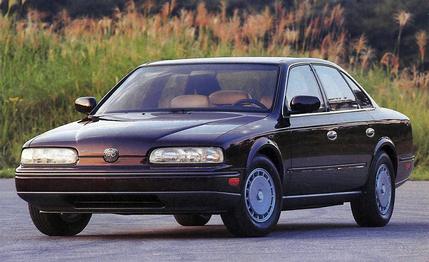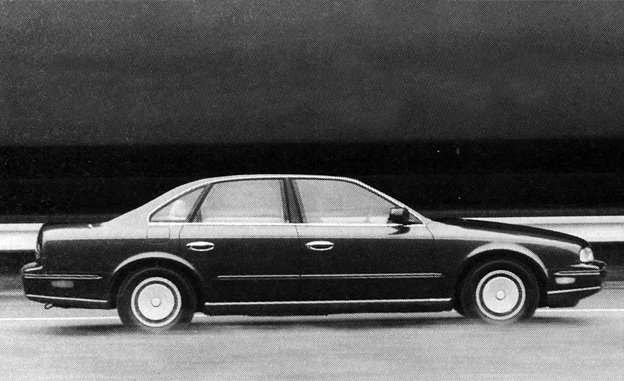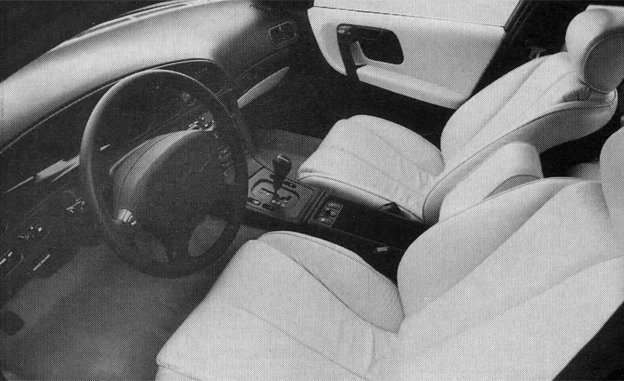
 Archived Road Test
From the January 1989 issue
Archived Road Test
From the January 1989 issue
Let's quickly wade through the background info: For those few of you who don't know that the Japanese are planning a gutsy move into the car market's best neighborhood, alongside all the Mercedes-Benzes, BMWs, Cadillacs, etc., well, they are.
Honda moved first when it created the Acura brand in 1986. Acura's projected sales for the 1988 calendar year are 127,000, an enormous success achieved in only the division's third year. In the fall of 1989, Toyota and Nissan will follow with, respectively, the Lexus Division and the Infiniti Division. And these two will be even more ambitious in their pricing, up to maybe $35,000 or so.
So much for background; now on to the plot. In an attempt to awaken Americans to this new idea—prestige sedans from the folks who only a few years ago specialized in budget-priced gas sippers—Nissan recently invited us to Japan for a first look at Infiniti. And this is our report to you.
We already know what you're thinking. You don't even have to say it. Your mind has already scrolled to the Nissan-formerly-Datsun file; pulled up the 300ZX, which has gotten fat and resistible in its old age; pulled up the Maxima, which is a bit of an unknown in its new form after years as a square-as-a-block-of-cheese four-door; pulled up the 240SX-used-to-be-200SX sporty coupe that was always eclipsed by the Toyota Celica; pulled up the Sentra and the Stanza that never managed to light up the night; and you've concluded that Nissan, mostly, is a pretty savvy pickup-truck maker. For Infiniti, your best guess is something kinda nerdy, like a Chrysler Imperial with a semi-wonderful engine.


Bruuuuup. Wrong answer. The Infiniti we saw and drove is going to shoulder its way into the fancy-car party and sit down at the head table. And all the regulars who usually divide up the glory at the high end of the market are going to gulp a few times and say, "Yessir." Because Infiniti's flagship Q-Series four-door is way beyond anything you'd expect of Nissan.
How can this be? We all know Nissan, right? The cars have been losing market share for several years because they can't quite fend off the competition. Nissan showrooms are chockablock with solid transportation, but there's not a single gotta-have on the floor—at least not before the newly introduced Maxima and 240SX. So how can Infiniti compete with the best from Germany, Sweden, England, and Detroit?
Well, obviously it couldn't if the car were merely a high-priced extrapolation of past Nissan ideas. And that's the mistake we all make when we try to forecast the future by projecting the past. What if the subject under scrutiny changes its game plan?
Nissan, we're now convinced, has been working feverishly over the last three years or so to make sure its future is nothing at all like its past. The results of that labor are coming to the market now. In the year that began this past autumn, six new Nissans are being introduced into the U.S.: the Maxima, the 240SX, a van-shaped station wagon called the Axxess, the new 300ZX, the Infiniti Q-Series four-door, and a lower-priced ($20,000 or so) Infiniti coupe. Incidentally, the Infiniti cars will carry the Infiniti banner in Japan too—unlike Acura, which is a brand name Honda uses only in North America.
While we're listing new Nissan models, you should know there are also several new ones in Japan that won't come here, notable among them the smooth Cima four-door (C/D, October 1988) priced at nearly $40,000 and the aero-wonderful-looking rear-drive Cefiro four-door that's just a few inches shorter than the new Maxima. "We are remaking Nissan," said Yoshio Arakawa, public-affairs director, and the company has the cars to back up that claim.
Still, the Infiniti QSeries is an incredible leap. It's an entirely new car from entirely new thinking. It's consciously aimed at the American market, although it'll be sold in Europe and Japan too. The target, Nissan says, was "touring-sedan features with sports-car performance."


Nissan's stylists didn't want an ultramodern look. Instead, they tried for a shape that would be perceived as new, yet that very soon would be regarded as traditional—maybe even the new standard to which traditional luxury automobiles are compared. In every paragraph of every conversation with the engineers and stylists who created the car, there is mention of Japanese heritage and culture. They wanted the Infiniti Q-Series to express the Japanese concept of luxury, which they feel is distinct from the European concept or the American concept. The Q-Series was to be a blend of Japanese automotive technology and traditional Japanese craft. They said they spent twice as long working out the appearance of the four-door as they normally spend on a new automobile.
So much for the party line. What's the Infiniti like really? To at least one guy, it's lust at first sight. The look is original, it's in excellent taste, and it says money in the way an expensive sedan must do. For those interested in flashing a strong visual statement, the Q-Series at first glance may seem too cautious. But it quickly grows on you and makes other brands seem contrived. On the second or third look, you begin to notice the bravery. The front has no grille. The dash has no wood. In the luxury-car world, such deviations from the norm are radical.